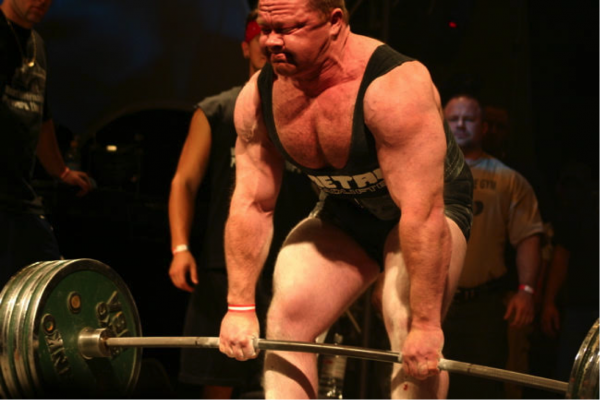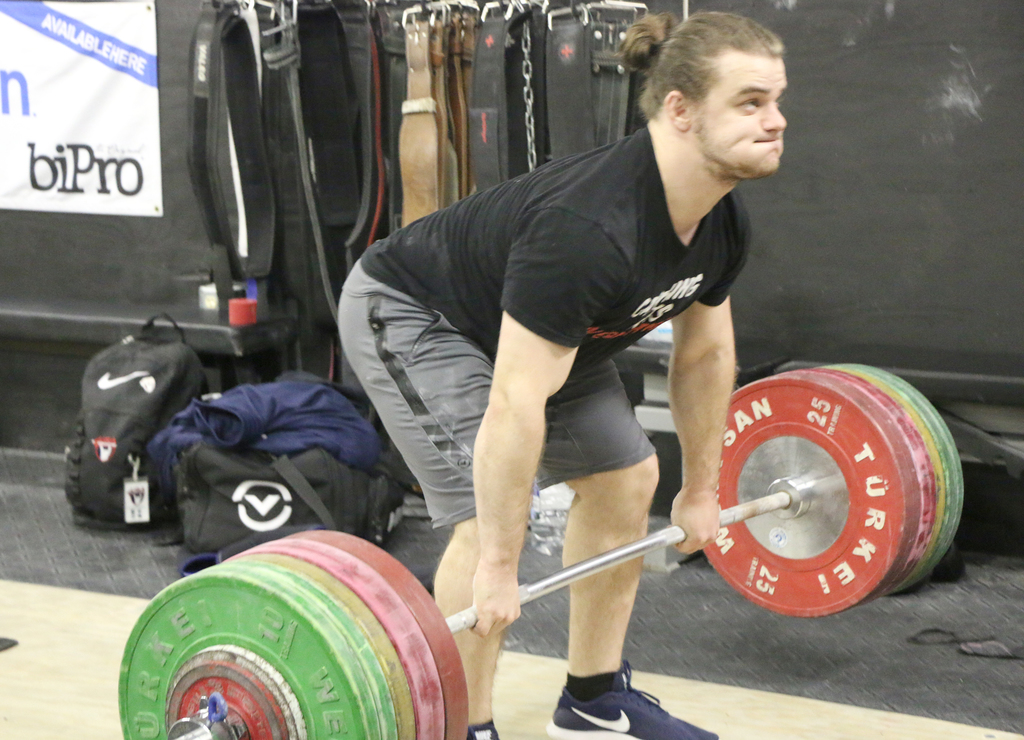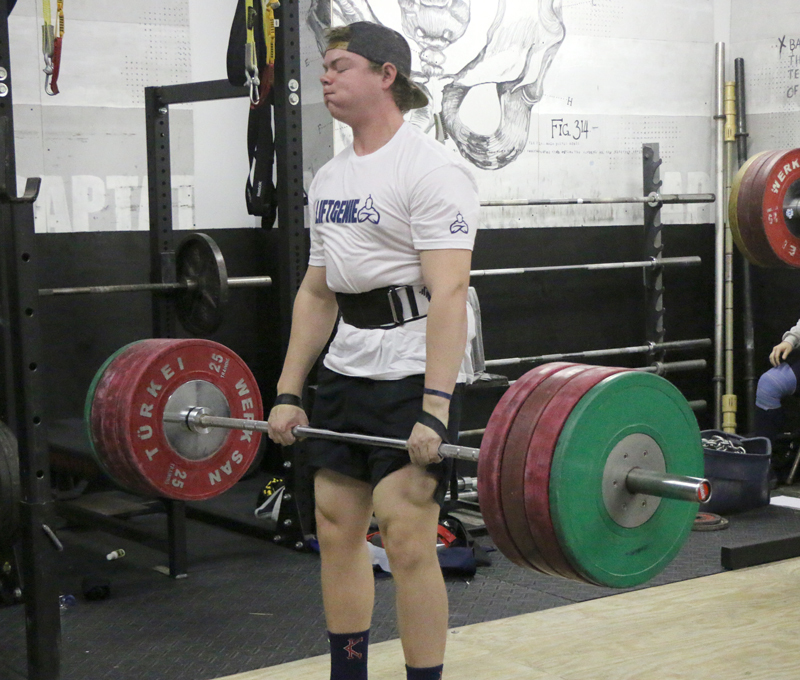CrossFit has shed more light onto the barbell world than everything else prior combined. CrossFit has shown the world the barbell isn’t some monster that will make women masculine and turn the average dad into the Incredible Hulk (I wish).
The back squat is now an everyday phrase being coined as the most functional movement one can perform. However, I’d like to throw the deadlift in the ring as a movement that’s just as important. I just wrapped up writing my latest guide, Pulling Science, so the topic is fresh on my brain.
[thrive_leads id=’10907′]
Since I will be addressing weightlifters, powerlifters, strength and conditioning athletes, and general fitness enthusiasts alike, I will refer to the deadlift most of the time as the pull. Weightlifters normally perform clean pulls, snatch pulls, or clean deadlifts. Since I will be referring to the pull mechanism as a whole and not just the deadlift exercise, pull seems less confusing.
DANGERS OF THE DEADLIFT
I believe most of us pull something or lift something off of the ground as much or even more than we put something on our backs and squat low to the ground. Most of you reading this are not in need of convincing – or you probably wouldn’t be reading an article from a weightlifting/powerlifting coach and former athlete. But there are still some people out there who hate on the pull for some reason. Some will say it is too dangerous, which totally frustrates me. Now that I am 45 years old and my body is worn down from years of training, pulling is the one thing I can do with little to no pain.
Any exercise can be dangerous if you perform it incorrectly. Heck, you can tear a biceps if you jerk too hard during a curl. However, performed correctly the deadlift is not only safe but will help prevent injuries on the field, on the platform, and in life. Deadlifts add much needed muscle from the traps all the way down to the ankles. Pulls are especially great for adding muscle mass to all the muscle groups aiding in spinal flexion, hip extension, knee extension, and grip strength. That’s a lot of muscles that all of us use for so many various tasks in sport and life.

Basically if you want to run faster, jump higher, or lift a car off of someone, you should train the pull.
WHAT ABOUT WEIGHTLIFTING?
If you’re a powerlifter, you have to train the deadlift obviously since it’s one of the three movements you compete in. But in the world of Olympic weightlifting, the pull or clean deadlift is much more widely debated. The debate has always baffled me, but nevertheless it’s a major point of discussion.
I think this is more of an old school generation debate. The reasoning some have against any type of clean deadlift or pull is that the speed is different from the competition movement – so they believe it will throw off the actual clean or snatch. What they are forgetting is that, in regards to fast twitch muscle fibers, it’s all about intent. If I am trying to pull as fast as possible, the fast twitch fibers are firing like crazy.

Here’s another point: if I add some hypertrophy to the muscles required to perform spinal flexion, hip extension, and knee extension, those areas now have bigger muscles to produce more force. There are two main ways we can get stronger, and those ways are bigger muscles and better efficiency from more of a neurological response. There are other aspects that come into play like muscle attachments and muscle fiber type, but those things are fixed my genetics and therefore out of our control. That leaves us with either getting bigger muscles or getting better at the movement.
Heavy pulls are going to slap some major beef onto the same areas required to perform snatches and cleans. Therefore, you will be able to produce more power in those movements if you practice those movements. When you think about it, the argument makes no sense. We know from Coach Bryan Mann that squats are directly related to increases in sprint speeds and vertical leaps. Obviously squats aren’t as fast as either one of those movements, and yet squats still contribute to the improvement in those movements. Why? It’s because squats strengthen the muscles required to sprint. Therefore an athlete is enabled to sprint faster because their muscles are now able to produce more force into the ground.
CASE STUDIES ON THE PULL
Common sense science aside, I have seen pulls produce better results. Most recently, I cut the squat volume down on two younger weightlifters on my team, Morgan McCullough and Ryan Grimsland. I added intensity and volume to the pull, and both boys have experienced major improvements in a short amount of time. Both boys competed at the Youth Pan American Championships in early June. Both have added major kilograms to their totals in the past two months of focusing more on the pull. Morgan has added 8 kilograms so far (17.6 pounds roughly). Ryan has added 9 kilograms so far (19.8 pounds).

A better case study would be Travis Cooper when he was training for the 2015 Senior World Championships. I was one of his three coaches at the time, with his main coach being Glenn Pendlay. Travis sustained a back injury that nearly sidelined him for the competition, which would have also significantly lowered his chance for the 2016 Olympics. Heavy squats of any kind would flare up his injury, but deadlifts didn’t seem to bother him at all. We opted to take a clean-deadlift-only approach with pulling two to three times per week.
Not only was he able to compete, but he actually totaled a lifetime personal record, which is always harder at a world championship (due to the travel, time difference, and the conservative nature of the meet). At that moment, I knew my hypothesis of pulling importance was not only true but that pulls might be even more important than I had thought.
If you know anything about the Chinese weightlifting team, you know they are one amazing group of athletes. They are crushing world records at a rate faster than any other country. They are also the most jacked team on the planet, making them the coolest team as well. I have never seen a Chinese athlete without a massive set of traps, lats, and spinal erectors. Guess what? They pull! They pull frequently, and they pull heavy with both heavy snatch pulls and heavy clean pulls. It’s obviously not hurting their performance.
MORE REASONS
Here are some other benefits of the pull:
- Faster sprint times
- Higher vertical leaps
- Longer broad jumps
- Increased muscle mass in the hips, back and legs
- Decreased injury rate on the field due to the stabilization of at-risk joints
- Strengthening of the core (all the muscles supporting the spine and pelvis)
- Decreased injury rate of the average adult performing household and other adult activities
- Better posture
The key is how you perform the movement. If you are an adult wanting to get generally fit, I recommend using a double overhand grip with a neutral spine. Obviously if you’re a powerlifter, you are going to use either a mixed grip or hook grip. You can also use a little spinal flexion to make the lift a bit easier because when the spine flexes it gets shorter front to back. That makes hip extension a bit easier, but probably increases the risk of injury. I say probably because there is still some research that needs to be done. Some people don’t seem to be affected as much as others, but I would still err on the side of caution. My friend Dr. Stuart McGill says it’s dangerous, so I am going to go with what he says. That’s his area of expertise. As a powerlifter, the reward might be worth the risk to you. That’s a personal decision to make.
However, when it comes to adults performing general fitness, I’d say to keep a neutral spine, never use straps, and keep a double overhand grip. If you have to use straps to lift the weight, it’s too heavy for your goals. People performing general fitness are trying to look and feel better. You will be able to reach both goals with a neutral spine and double overhand grip.
If you are a sport athlete (football, basketball, wrestling, soccer, etc) or an Olympic weightlifter, I definitely recommend keeping a neutral spine as well. A neutral spine is required to perform a heavy snatch or clean. A neutral spine is also more sport specific to field athletes. Not to mention, as Dr. McGill says, “Proximal stiffness around the spine leads to distal power output in the legs and arms.” I’d also forego strap use with athletes simply for the benefits of increased grip strength – leading to easier tackles, better take downs in wrestling, and any other movement requiring a strong grip.
For Olympic weightlifters, strap use can go either way. If you have a strong grip, I’d recommend using straps if your hands are already beat up. Weightlifters perform so many pulls that the health of their hands can be a real issue. However, if grip is an issue (like it can be for some people with small hands), you might want to perform heavy clean pulls without straps.
FOR MORE…
Pulling Science goes into much more detail than this. In the book, I included six pulling programs. There is also the advice from some amazing coaches and athletes like Dr. Stuart McGill, Stefi Cohen, Dr. Andy Galpin, Hayden Bowe, Dr. Aaron Horschig (Squat University), and many more. I break down the science in a way very easy to understand, and then I give the real world advice from the top sources. I also give my own advice for strengthening the pull. This book is one of the most complete books that I’ve written, so I hope that you will enjoy it.
[thrive_leads id=’10907′]
Great article Coach!
When and how do I get the book on Pulling